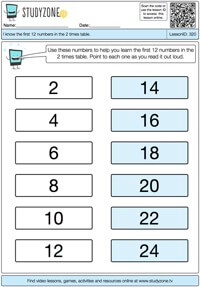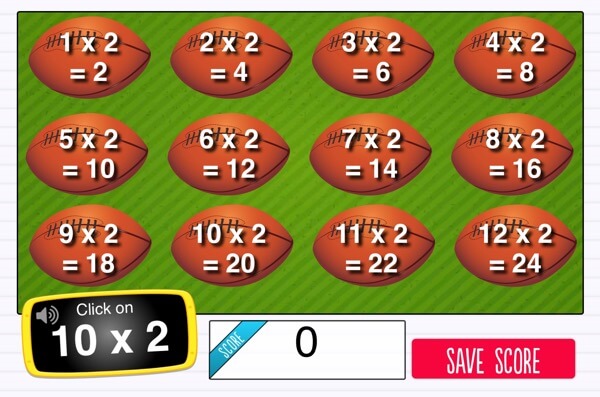If only they knew their times tables...

I'm sure we've all said this before, perhaps at the end of a lesson on fractions, or percentages, or ratio, or algebra, or word problems, or arithmetic, or...the list goes on.
It's clear to anyone who has been teaching for anything more than a week or so that a secure knowledge of times tables facts is one of the most important things a child can have to support them in their mathematical understanding. Yet how much time do we actually spend teaching times tables facts, especially as children get older?
Of course, times tables knowledge begins with the concept of repeated addition and arrays - and this is really important - but this soon becomes of little help to children who have 36 arithmetic questions to answer in half an hour, as is a requirement of the Year 6 SATs. Instead, a secure rapid recall of times tables facts, including equivalent divisions, is one of the most important things we may ever teach our children. Just imagine what your class would be like if every child knew all their times tables facts off by heart?
In this blog post we’ll explore the rationale behind the early times tables lessons in our new learning pathways. These focus entirely on the practice of hearing them, seeing them, saying them and touching them.
Give children the answers
Perhaps one of the biggest mistakes we can make when teaching a brand new times table to someone is to presume they will remember facts from the outset. Instead, giving them an answer sheet that they can refer to allows them to see and touch the numbers as they’re saying them out loud. Children will soon stop referring to the sheet as and when they feel ready.

The early activities on our learning pathways all include ready-made printable sheets of number facts and number sentences, ready for students to refer to as they chant along with the videos. Alternatively, they may prefer to touch the screen as the video plays, following the finger as it moves between the answers.
Chanting the numbers
We start by chanting the numbers of a times table: 2, 4, 6, 8, 10, 12 and so on. Whilst it’s true we’re trying to remove the dependency of counting up to find an answer, this initial approach helps children recognise the numbers that belong in a times table so they can quickly select from a pool of possible answers. As they become increasingly aware of these ‘families’ of numbers, they’re also establishing an awareness of common multiples and, all through simple number recognition and recall.
Chanting the questions and answers
Moving on from chanting simple number sequences, children will start to chant whole number sentences, such as 1 x 2 is 2, 2 x 2 is 4 and so on. Again, this is to increase their familiarity with the number sentences that belong in a times table, so that, in time, when part of the number sentence is removed they can quickly and easily fill in the gap.
As was the case with the number sequence chanting, printable reference sheets help children see the times table as they say it out loud.
Matching Questions and Answers
By this stage, children should have a growing familiarity of the numbers within a given times table, as well as the number sentence that offers up that answer. The next stage is to increase this recall by asking them to match questions and answers randomly. This is still done with the questions and answers visible, but, increasingly, they will be recalling the answers from memory, thinking back to the earlier activities.
Next steps…
These early stages are very much about hearing, seeing, saying and touching the numbers, all supported with printable resources. The next stage is to remove the visible prompts and to start recalling number facts from memory. Best of all, our automated learning pathways guide students to this next stage as and when they’re ready, all without any adult intervention.
We’ll cover more on the other stages of our learning pathways in future blog posts.
If you haven’t yet tried out our brand new times tables package with your children, why not start your free trial now and give it a go.


Comments